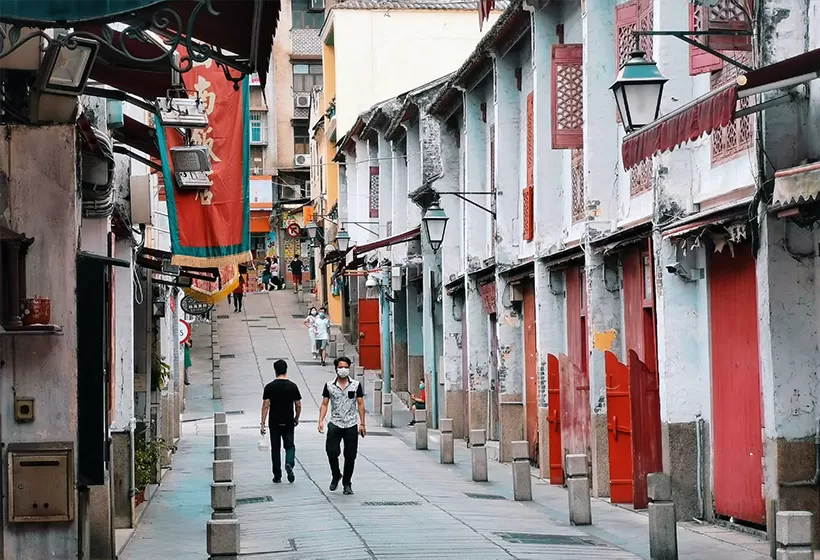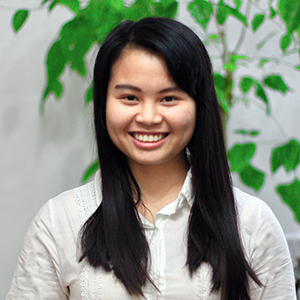The Historic Centre of Macao
World Cultural Heritage Site: The Historic Centre of Macao (2005)
The Historic Center of Macao shows the unique assimilation of Chinese and Portuguese cultures in Macau, a former Portuguese colony. It is a historic center with a combination of well-preserved Chinese and Western architectures in China. There, Western-style architecture is prevalent as a witness to the spread of Western religious culture to China and the Far East. For four hundred years, the Chinese and Western cultures have flourished there, contributing to its melting pot of cultures.
In the mid-16th century, to respond to the new trend arising in international trade, the Ming government designated an area in the southwestern Macao Peninsula as a trade zone where foreign merchants and Portuguese merchants could establish trade ties with their Chinese counterparts. Since then and before the 19th century, Macao has developed into an important trade port open to the outside world, as well as a major international port in Asia. The flourishing trade held a fascination to people around the world because people from various regions lived in harmony with one another. The city encompassed by walls is referred to by the Portuguese as the city built in the name of god. Today, the historic center constitutes a major region in Macao.
For four hundred years, people around the world have found their way to this historic center, including Portugal, Spain, the Netherlands, Great Britain, France, Italy, America, Japan, Sweden, India, Malaysia, the Philippines, North Korea, and other African countries, bringing with them diverse ideas and cultures. It was on this land that people of various professions built houses, churches, roads, and barbettes and undertook diverse cultural activities. The multicultural atmosphere, in Macao, is at the forefront of cultural exchange between China and the West. Meanwhile, expatriates have been introduced to the world of Chinese culture and traditions, contributing to a better understanding of China.
With more people settling down, they brought with them the architectural styles of their own countries. Thus, Macao became at the forefront of the exchanges between Chinese and Western architectural styles. There, the buildings erected by the Portuguese offer a glimpse of traditional Portuguese architecture. In fact, the architectural style influenced by the Renaissance was intermingled with the local and Asian styles, and given a new form in Macao.
In the late Ming Dynasty and the beginning of the Qing Dynasty, a large number of Catholic missionaries sought to spread Catholicism and actively got involved in missionary work in the Far East, opening a new chapter for the cultural exchange between the East and West. These missionaries had various convents, introducing modern technology and arts into China, and at the same time, spreading the splendid Chinese civilization to the West. As the base for missionary work, Macao witnessed the establishment of a multitude of organizations, many known to be the earliest in China, including China’s earliest Western-style college (Colégio de So Paulo), China’s earliest Western-style hospital (Hospital de S. Rafael), China’s earliest Western-style printing house using metal plates to print Latin characters (the press of Colégio de S o Paulo), China's earliest non-Chinese version newspaper (A Abelha da China), etc. Colégio de S o Paulo (no longer exists today) and St. Joseph’s Convent, was founded by the Society of Jesus. It produced a profusion of talents for missionary work in China and the Far East. It was also an incubator for Chinese missionaries, later contributing to the cultural exchange between the East and the West.
In the 19th century, with the arrival of Morrison, the first missionary in mainland China, Macao was a base for its missionary work in spreading Catholicism. Cai Gao, China's first protestant, was baptized in Macao by Morrison. Also, A Dictionary of the Chinese Language written by Morrison was published in Macao. Morrison School run by the protestants helped introduce Western-style education into China, producing excellent students and contributing to education modernization in China.
The local people worship Mazu, which shows the connection between the residents in Macao and those in the coastal area of Fujian Province (who worship Mazu). The unique social and historical identity of these people shape local A-Ma temples that cannot be found elsewhere. It is characterized by a combination of Chinese and overseas Mazu cultures. As Macao used to be the most important trade port that connected China and the West, the A-Ma temples are known as the earliest locations where Mazu culture was introduced to Europeans.
Over the past four hundred years, the Chinese and Portuguese have made their presence in the Historic Center of Macao, creating different communities of unique styles. Other than demonstrating Chinese and Western architectural styles, these communities embody the Chinese and Portuguese people’s respect for diverse religions, cultures, and customs. The harmonious atmosphere shared by both the Chinese and Portuguese people is thought to be the best and most unique region in Macao.
GREAT FAMILY CHINA TOUR
JULY 2024 We wanted to thank Grace at China Culture tour for organizing a great tour of China. We enjoyed our Beijing - Xian-Chengdu -Guilin -Yangshuo - Shanghai trip. Our local guides Bruce in Beijing, Susan in Xian, Jane in Chengdu, Mike in Guilin and Mary in Shanghai took care of us…read more details »
Teng Han L from SINGAPORE
Ready to Create a Unique Dream Travel?

